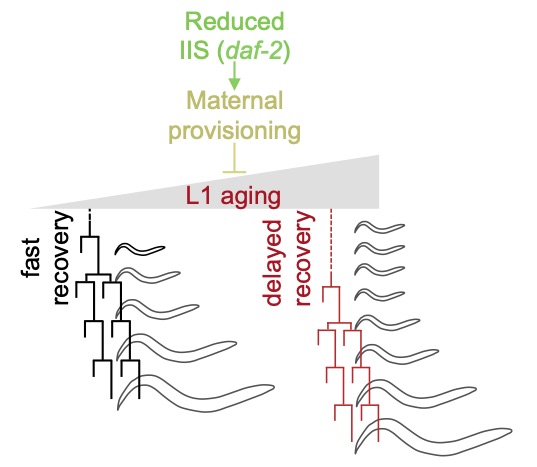
Cells can enter quiescence in adverse conditions and resume proliferation when the environment becomes favorable. Prolonged quiescence comes with a cost, reducing the subsequent speed and potential to return to proliferation. Here, we show that a similar process happens during Caenorhabditis elegans development, providing an in vivo model to study proliferative capacity after quiescence. Hatching under starvation provokes the arrest of blast cell divisions that normally take place during the first larval stage (L1). We have used a novel method to precisely quantify each stage of postembryonic development to analyze the consequences of prolonged L1 quiescence. We report that prolonged L1 quiescence delays the reactivation of blast cell divisions in C. elegans, leading to a delay in the initiation of postembryonic development. The transcription factor DAF-16/FOXO is necessary for rapid recovery after extended arrest, and this effect is independent from its role as a suppressor of cell proliferation. Instead, the activation of DAF-16 by decreased insulin signaling reduces the rate of L1 aging, increasing proliferative potential.
We also show that yolk provisioning affects the proliferative potential after L1 arrest modulating the rate of L1 aging, providing a possible mechanistic link between insulin signaling and the maintenance of proliferative potential. Furthermore, variable yolk provisioning in embryos is one of the sources of interindividual variability in recovery after quiescence of genetically identical animals. Our results support the relevance of L1 arrest as an in vivo model to study stem cell-like aging and the mechanisms for maintenance of proliferation potential after quiescence.
Hola, esto es un comentario.
Para empezar a moderar, editar y borrar comentarios, por favor, visita la pantalla de comentarios en el escritorio.
Los avatares de los comentaristas provienen de Gravatar.